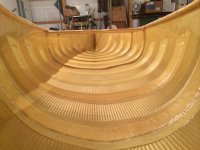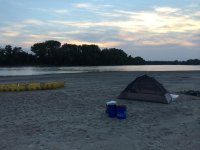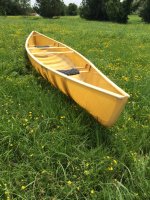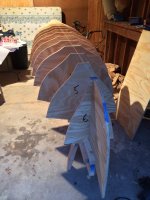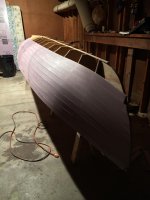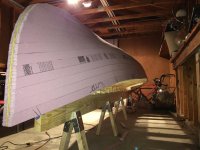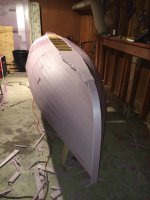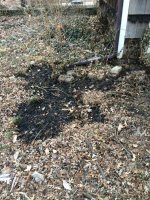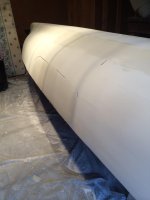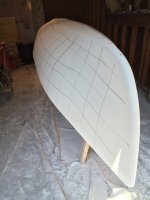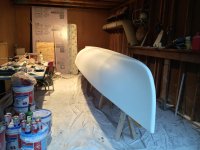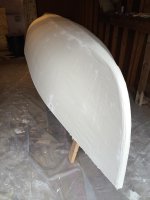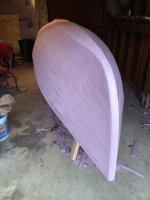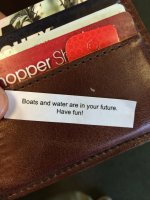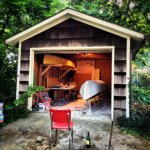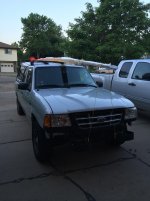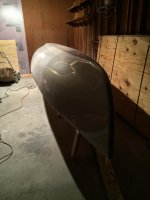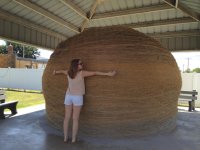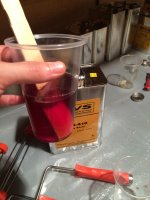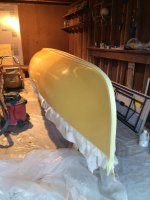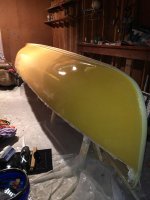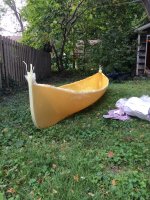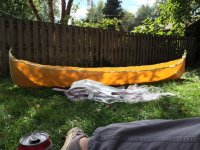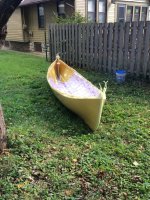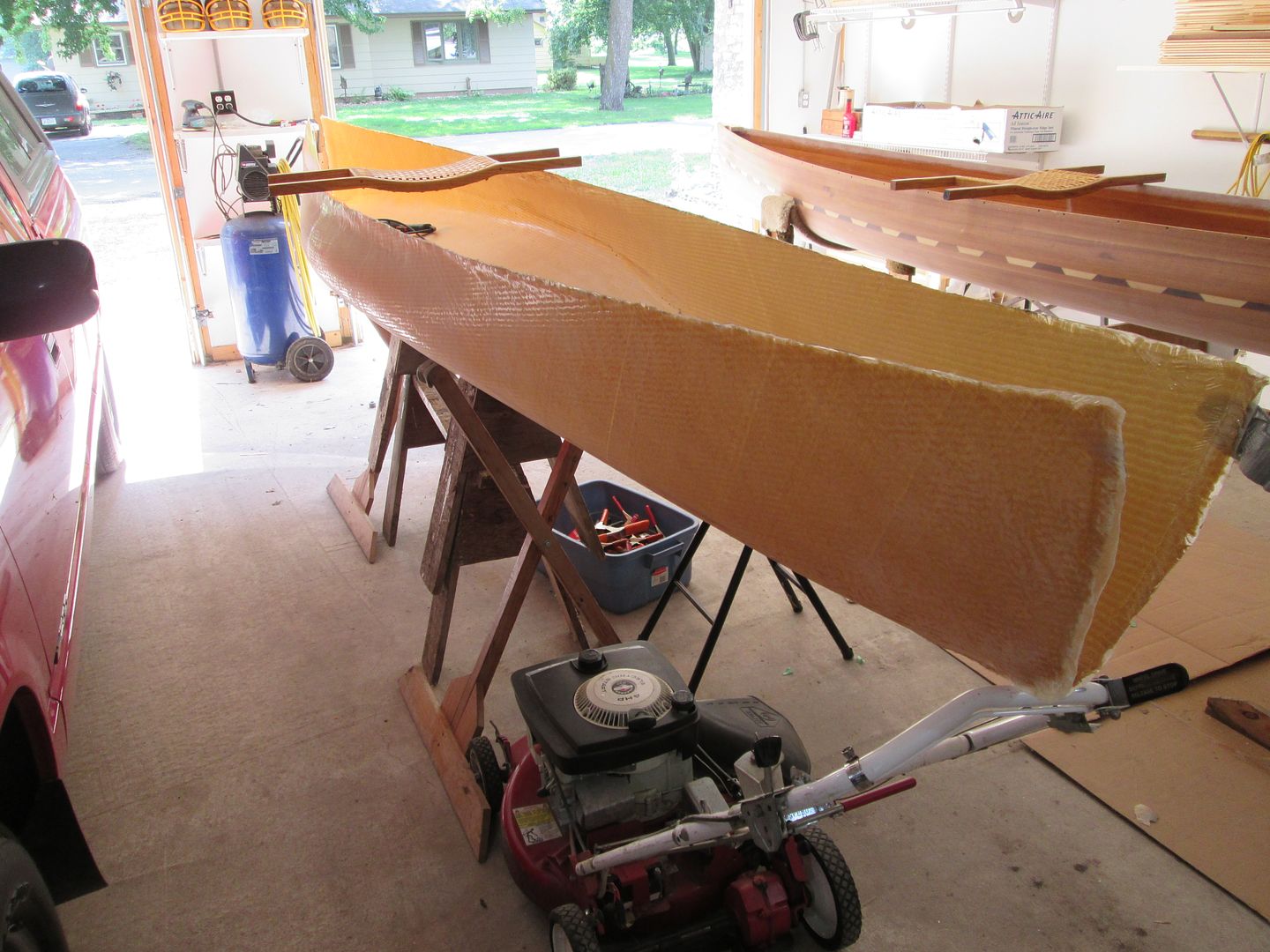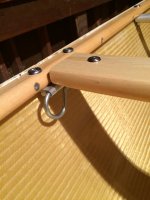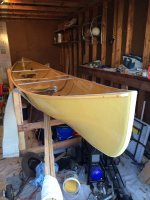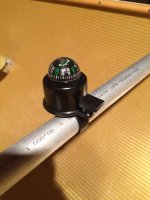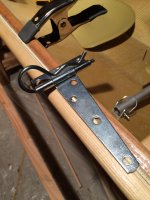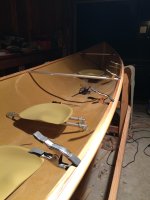First a disclaimer: I will never build another canoe in this method. I might build another all composite boat, but I will not use the foam strip and mud method. More on that later. I would highly recommend building a cedar strip canoe and using it as the male plug for the Kevlar and glass boat. In that way you would end up with two boats for not much more effort. Sell one if you like or keep them both.
References that come in handy:
Building Your Kevlar Canoe by James Moran
This book is where it all started for me. Improvements in the method have been made since publication
Boatbuilder's Manual by Charles Walbridge
A great book on composite construction from the very beginnings of composite canoe and kayak construction. It is still a great reference today.
http://www.myrabo.com/k-canoe/index.htm
This guy used the Moran method and made the single biggest improvement. Window shrink film. More on that later.
Prologue:
I have done some canoeing over the years, I'm 29 now, so I haven't had that much time yet. Most of that canoeing has been in KS, MO, and AR in rental boats, aluminum or royalex. It dawned on me at some point that I should have my own canoe. I asked my girlfriend if she would go canoeing with me and she agreed. She was out of town for the weekend, so I told her I might buy a canoe by the time she got back. I naturally looked for the best canoe I could find, a lightweight composite boat. I was hit by sticker shock and when she got back she asked if I had bought a canoe. I said, "No, but I bought a book on how to build my own." She laughed at me. Little did she know what a monster I would become. She is still around despite it. The first boat I built using this method was a John Winters' Mattawa. It has one layer of 9 oz Kevlar and two full layers of 6 oz S-glass. The boat came out at 43 lbs. Right in line with Swift's version of the same boat.
Which leads me to the current build. A Grant Virginia guideboat b*st*rdized in Kevlar and fiberglass. The lines came from Building an Adirondack Guideboat by Michael Olivette and John Michne. I started by modeling the station molds in a CAD program, and one of my engineering friends stayed late after work and commandeered the plotter. I made a couple modifications to the design. I added 2 inches to the sheer throughout the middle of the boat so I wouldn't have the oars banging on my knees, and I reworked the stems for the composite construction. On to construction in the next post. I'll get this all cranked out tonight, but I have a beer and tobacco habit and the weather is nice.
This should go before the prologue I guess, but I would like to thank Hamms and Old Milwaukee. The recycling money alone from the cans I drank while building this boat could probably buy the supplies for my next project. My girlfriend for being patient and tripping with me, and my parents who have become lamination experts. I built the first boat at their house, since I didn't have a garage at the time.
I'll try not to be so long winded in the upcoming posts. I'll leave you with some pictures of the Mattawa.
References that come in handy:
Building Your Kevlar Canoe by James Moran
This book is where it all started for me. Improvements in the method have been made since publication
Boatbuilder's Manual by Charles Walbridge
A great book on composite construction from the very beginnings of composite canoe and kayak construction. It is still a great reference today.
http://www.myrabo.com/k-canoe/index.htm
This guy used the Moran method and made the single biggest improvement. Window shrink film. More on that later.
Prologue:
I have done some canoeing over the years, I'm 29 now, so I haven't had that much time yet. Most of that canoeing has been in KS, MO, and AR in rental boats, aluminum or royalex. It dawned on me at some point that I should have my own canoe. I asked my girlfriend if she would go canoeing with me and she agreed. She was out of town for the weekend, so I told her I might buy a canoe by the time she got back. I naturally looked for the best canoe I could find, a lightweight composite boat. I was hit by sticker shock and when she got back she asked if I had bought a canoe. I said, "No, but I bought a book on how to build my own." She laughed at me. Little did she know what a monster I would become. She is still around despite it. The first boat I built using this method was a John Winters' Mattawa. It has one layer of 9 oz Kevlar and two full layers of 6 oz S-glass. The boat came out at 43 lbs. Right in line with Swift's version of the same boat.
Which leads me to the current build. A Grant Virginia guideboat b*st*rdized in Kevlar and fiberglass. The lines came from Building an Adirondack Guideboat by Michael Olivette and John Michne. I started by modeling the station molds in a CAD program, and one of my engineering friends stayed late after work and commandeered the plotter. I made a couple modifications to the design. I added 2 inches to the sheer throughout the middle of the boat so I wouldn't have the oars banging on my knees, and I reworked the stems for the composite construction. On to construction in the next post. I'll get this all cranked out tonight, but I have a beer and tobacco habit and the weather is nice.
This should go before the prologue I guess, but I would like to thank Hamms and Old Milwaukee. The recycling money alone from the cans I drank while building this boat could probably buy the supplies for my next project. My girlfriend for being patient and tripping with me, and my parents who have become lamination experts. I built the first boat at their house, since I didn't have a garage at the time.
I'll try not to be so long winded in the upcoming posts. I'll leave you with some pictures of the Mattawa.

